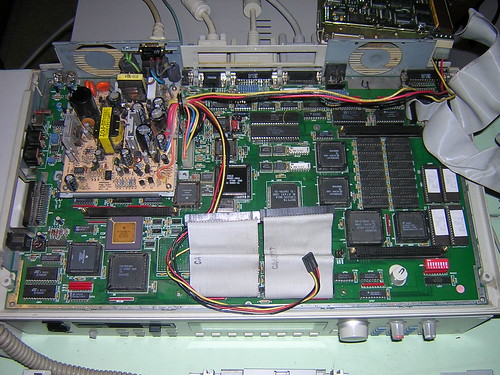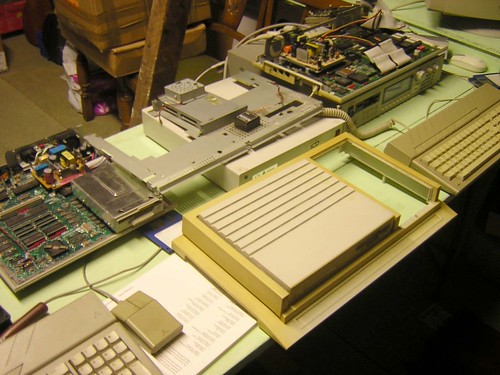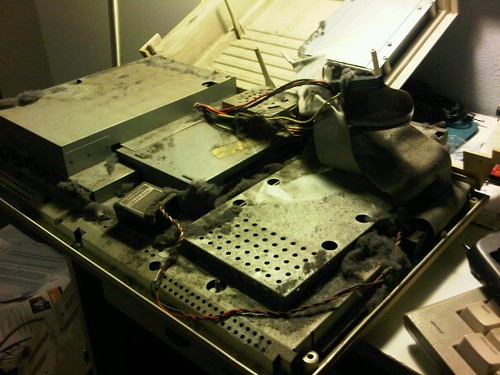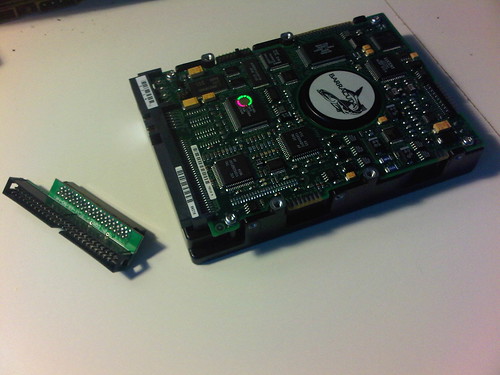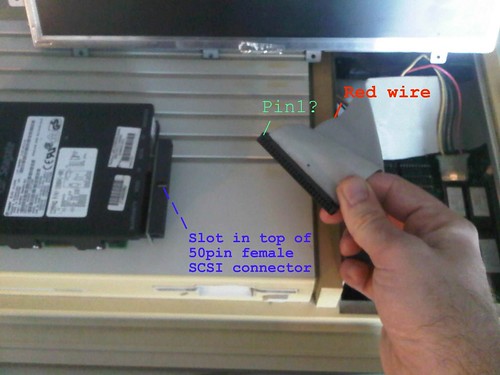I have got a basic TT also, and I have only had it for over a month, and have had to do some extensive repairs to get it going.
Personally, I am going to try the same thing next, and I have what I think is the cheapest (and no doubt slowest) way to do it. I am sure that if you are serious there are better ways. But hey, its Retro!
I am just about to try the SERIAL route, using null-modem, as I want to learn about the computer, and I also know that I have got a good connection. So I want to experemnet.
So far, I have hooked a "null modem cable" to my Windows7 PC and I have attached the other end to Serial 2 of the TT to create the link. The null modem cable is easy to get and cost me about £2. I have seen them in computer shops this year going for less than a fiver. This is all you need to network to the Windows7 PC, but please bear in mind that it is very slow connection, and much much less capable than either a network card or netusbee.
Anyway. So there are two reasons I want this:-
Q1. To transfer large files to the TT from Windows7
Q2. To network drives
Q3. To try out (slow) internet connection through ICS (internet connection sharing)
- Years ago I used to use a "proxy server" on the PC end to give internet to other machines
Anyways, I only started yesterday, and I have had success from Point 1!!
A1. I can now transfer files, and this works great!! Its made it so much easier to get files on my machine and also proves the COMMS porst works and allows me to test the settings and speed. Seems to work well at 115200 bps (I have no idea what this is in kB per second?) but its about fastest port can do, which is still about 6 times faster than an old skool 19200 bps internet connection so what do you want (are we retro or what!?)
How to do it!
I first needed to get the serial ports on the TT working well. The build in COMMS driver in GEM is crap, so you need HSMODEM07 ( its herehttp://gem.win.co.nz/hall/pages/files2.html#fixes )
Next put the files DRIVIN, DRIVINGSA, ESCC and MFP_TT (TTT serial port driver ) in your AUTO folder. This adds HDMODEM routines to TOS, and this gives much more speed and modern drivers to your serial ports. Also, please be aware that the TT sports four serial ports MODEM1, MODEM2, SERIAL1 and SERIAL2 which all can run at different speeds.
Step 2, is to add a new CPX module to XCONTROL panel. The Ataris basic MODEM.CPX is too basic and only allows slower speeds, so you must replace this with SERIAL.CPX. This CPX is great!!! I used it yesterday, to tweak my comms ports and it is so wonderful and easy to use!
My SERIAL.CPX setup (perhaps someone can improve?)
- I connected the null modem cable to SERIAL2 on the back of the TT
- I set SERIAL.CPX to 'Ser.2/LAN' and then selected '115200 bps' (try lower if dont work). Also I set 'Flow CTRL' setting to 'RTS/CTS' although it did work with default, I thought that this would make it quicker and more reliable. (although all data is CRC checked anyway!!!)
- Next in SERIAL.CPX select the 'Driver' tab for Ser.2/Lan and set send and recieve buffers to 256. Again, this improves speed for me. Make sure DTR is highlighed, and this is the best connection I found. Should work for all serial port comms to PC now!
Step 3. Now this is just how I decided to transfer files. I know this is an easy method, and I have only been at this yesterday so far, and I am planning on learning how to use everything, but heres how you do it. I needed to use a program on my Windows7 PC called HyperModem, this is easy to find on Windows XP and you can also run it on Windows7 ( I have put a copy of it herehttp://www.thebigconsultant.com/atari/hyperterminal.zip ) and its sooooooo easy! Just run it, and select 'New Connection', then its asks you for speed and COM Port. Mine is on COM1, and I tried all speeds, finding 115200 bps was fastest I could get. Then on HyperTerminal click 'Transfer' menu and 'Send File'
Step 4. On the Atari end, so simple. I made a folder anywhere on my TT and put these files inhttp://www.thebigconsultant.com/atari/ZMODEM.zip which is a small command line proggy to send and receive files via modem. Simply run RZ.TTP and type in -rz in the 'Parameters' box and the file on the PC magically appears on your TT! Yay! I have been using this to get LOADS of software onto TT, and will also use it to backup my C Partition very soon. So now I know my COM1 works.
Q2. To network drives
I have not yet had time to do this. So I thought I would share with you. There is are at least 2 popular ways:-
1. To use GhostLink
2. To use BNET
Ghostlink will not work for me, and I suspect Windows7 is the culprit. So I am going to try and set up network drives with it. Looks more professional anyway, and I can probably set up a "Multi Atari LAN" system quite easily, with my TT, MEGA ST and STe... coool!
All would share with up to 8 remote machines. The BNET software is well written, and has, like STING hypertexxt documentation for use with ST-Guide. So is easy to set up, even reading instructions on your Atari, using ST-Guide Desk Accessory and the setup instructions. I am doing this next, as will be nice to have a drag and drop network.
Q3. To try out (slow) internet connection through ICS (internet connection sharing)
- Years ago I used to use a "proxy server" on the PC end to give internet to other machines
This one is to set up CAB or a similar browser. Again I have not done this yet, but I know for a fact that it is possible, and pretty well documented to do this using NULL MODEM to PC. To do this you already now have HMODEM07 which is needed for reliable and fast(er) connection. You also need to set up and test the Serial or Modem port you choose (bear in mind some are slower) and get software onto your TT.
To use internet with SERIAL interface over NULL MODEM cable, you will need STING. STING is the TCP/IP stack that the Atari internet browsers like CAD and Highwire lock onto. I have not used these yet, as I have only just go my Atari, but it looks quite well documented on the internet. You need to forward a 'shared connection' e.g. 192.168.0.2 on your PC and also set an IP Address on your Atari TT, say 192.168.0.3
To do this STING has some AUTO folder files, and four CPX modules. Again, they look excellent. Actually simpler than Windows networking options. So using these, you set your internet domain, and IP settings to PC over SERIAL2 and you are away. The Atari software all seems to like STING, and you can then use internet, FTP, or instant messaging as well. Pretty cool.















